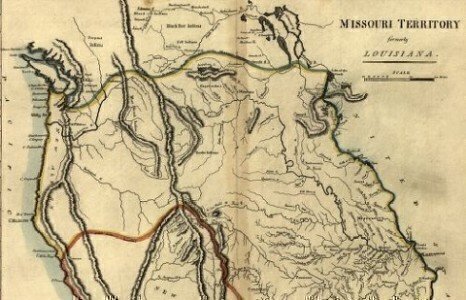On March 3, 1820, Congress approved the Missouri compromise, a law that maintained a balance in the Senate between free and slave states. The pact only lasted 34 years, and its elimination was one of the contributing factors that led to the Civil War.
No less an authority than former President Thomas Jefferson saw the deal as the start of a fight to break up, or maintain, a United States.
“[The] Missouri question aroused and filled me with alarm . . . I have been among the most sanguine in believing that our Union would be of long duration. I now doubt it much,” he told a friend. He called it a “fire bell in the night, [that] awakened and filled me with terror. I considered it at once as the knell of the Union.”
At the time, the Missouri Compromise was seen as a critical agreement to preserve the balance of power in Congress between slave and free states, and keep the Union intact.
On February 16, 1820, the Senate agreed to consider the admission of Maine and Missouri as states combined in one bill. The following day the Senate changed the bill to say that slavery was banned in the Louisiana Territory north of the 36° 30´ latitude line, except for Missouri.
But the House rejected the Senate bill and voted to admit Missouri without slavery. A compromise bill based on proposals by Senator Henry Clay of Kentucky passed the House by three votes on March 3. Three days later, President James Monroe signed the bill into law.
The Missouri Compromise kept the peace, but its critics in the South objected to the federal government imposing any restrictions on a state that wished to have slavery as an institution. As new states were admitted, a balance was kept between free and slave states until 1850.
California was then admitted as a free state, but it had to agree to have one pro-Slave member in the Senate to maintain a free state-slave state balance.
In 1854, the Kansas-Nebraska Act repealed the Missouri Compromise. It allowed for free, white male citizens of the two territories to decide if they would apply for admission as a free or a slave state. Violence broke out in Kansas, which delayed its admission to the Union.
The Dred Scott v. Sandford decision by the Supreme Court in 1857 found that the Missouri Compromise was unconstitutional. Chief Justice Roger Taney and six other Justices ruled that Missouri Compromise was illegal because Congress had no power to prohibit slavery in the territories, and slave masters were guaranteed property rights under the Fifth Amendment.
Later, the 13th and 14th Amendments overturned major parts of the Dred Scott decision—notably, the part of the ruling that held that African Americans could not be citizens under the Constitution.








